
DALM
Domain Adapted Language Modeling Toolkit - E2E RAG
Stars: 276
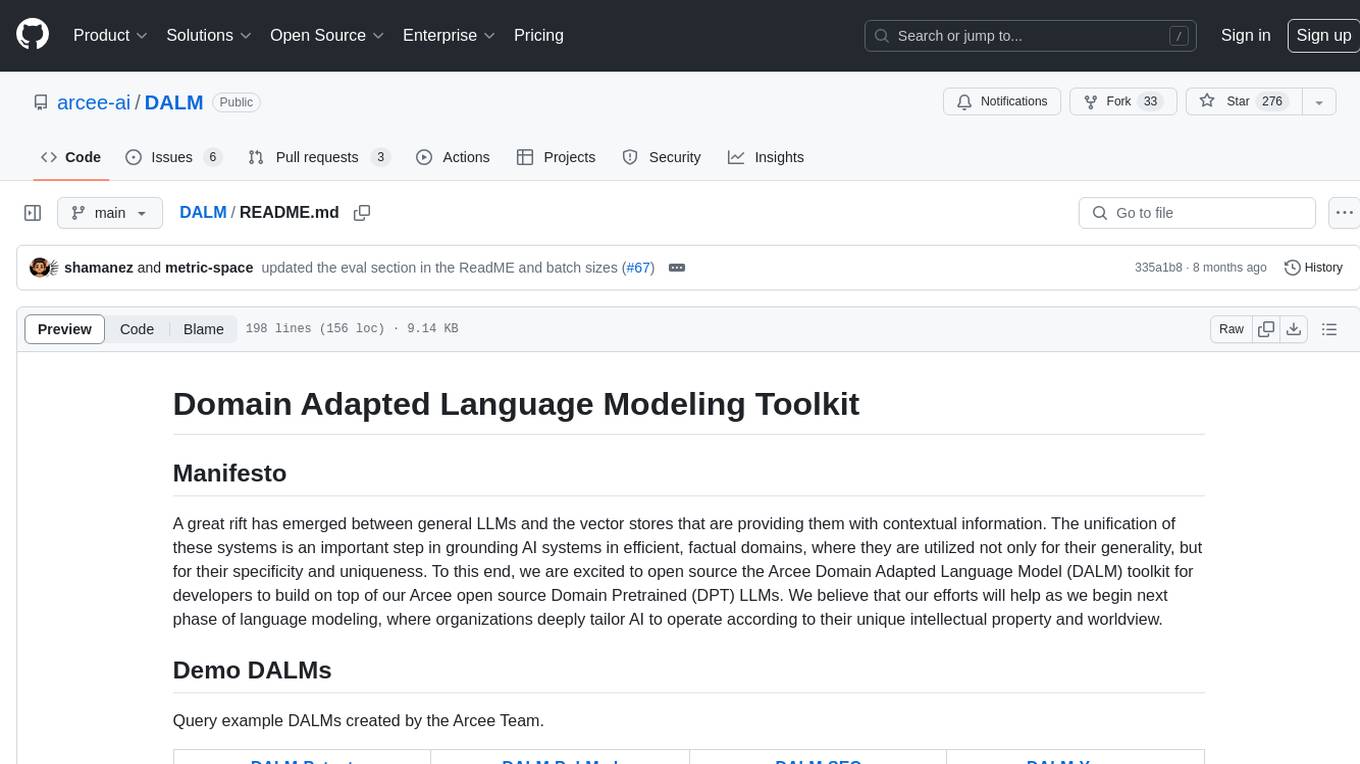
The DALM (Domain Adapted Language Modeling) toolkit is designed to unify general LLMs with vector stores to ground AI systems in efficient, factual domains. It provides developers with tools to build on top of Arcee's open source Domain Pretrained LLMs, enabling organizations to deeply tailor AI according to their unique intellectual property and worldview. The toolkit contains code for fine-tuning a fully differential Retrieval Augmented Generation (RAG-end2end) architecture, incorporating in-batch negative concept alongside RAG's marginalization for efficiency. It includes training scripts for both retriever and generator models, evaluation scripts, data processing codes, and synthetic data generation code.
README:
A great rift has emerged between general LLMs and the vector stores that are providing them with contextual information. The unification of these systems is an important step in grounding AI systems in efficient, factual domains, where they are utilized not only for their generality, but for their specificity and uniqueness. To this end, we are excited to open source the Arcee Domain Adapted Language Model (DALM) toolkit for developers to build on top of our Arcee open source Domain Pretrained (DPT) LLMs. We believe that our efforts will help as we begin next phase of language modeling, where organizations deeply tailor AI to operate according to their unique intellectual property and worldview.
Query example DALMs created by the Arcee Team.
| DALM-Patent | DALM-PubMed | DALM-SEC | DALM-Yours |
|---|---|---|---|
 |
 |
 |
 |
This repository primarily contains code for fine-tuning a fully differential Retrieval Augmented Generation (RAG-end2end) architecture.
For the first time in the literature, we modified the initial RAG-end2end model (TACL paper, HuggingFace implementation) to work with decoder-only language models like Llama, Falcon, or GPT. We also incorporated the in-batch negative concept alongside the RAG's marginalization to make the entire process efficient.
-
Inside the training folder, you'll find two codes to train the RAG-end2end and Retriever with contrastive learning.
-
All evaluations related to the Retriever and the Generator are located in the eval folder.
-
Additionally, we have data processing codes and synthetic data generation code inside the datasets folder.
To perform training and evaluation for both the retriever model and the new rag-e2e model, please adhere to the following steps.
The system reqs depend on the retriever model, generator model, and batch size. But for reference (e2e rag), we used the following for our experiments (eval results below):
- retriever:
BAAI/bge-large-en - generator:
meta-llama/Llama-2-7b-hf - batch size: 18
- dataset size: 200k
This took 7 hours on a single A100 GPU (80GB).
You can install this repo directly via pip install indomain
Alternatively, for development or research, you can clone and install the repo locally:
git clone https://github.com/arcee-ai/DALM.git && cd DALM
pip install --upgrade -e .This will install the DALM repo and all necessary dependencies.
Make sure things are installed correctly by running dalm version. On an non-intel Mac you may need to downgrade transformers library: pip install transformers==4.30.
You can run dalm qa-gen <path-to-dataset> to preprocess your dataset for training. See dalm qa-gen --help for more options
If you do not have a dataset, you can start with ours
# Note - our dataset already has queries and answers, so you don't actually need to run this.
# replace `toy_dataset_train.csv` with your dataset of titles and passages
dalm qa-gen dalm/datasets/toy_data_train.csv- The setup for training and evaluation can be effortlessly executed provided you possess a CSV file containing two/three columns:
Passage,Query(andAnswerif running e2e). You can utilize the script question_answer_generation.py to generate this CSV. - It's important to highlight that the retriever-only training method employs solely the passages and queries, whereas the rag-e2e training code utilizes all three columns.
- In our experiments, we utilize
BAAI/bge-large-enas the default retriever and employmeta-llama/Llama-2-7b-hfas the default generator. The code is designed to be compatible with any embedding model or autoregressive model available in the Hugging Face model repository at https://huggingface.co/models.
You can leverage our scripts directly if you'd like, or you can use the dalm cli. The arguments for both are identical
Train BAAI/bge-large-en retriever with contrastive learning.
python dalm/training/retriever_only/train_retriever_only.py \
--dataset_path "./dalm/datasets/toy_data_train.csv" \
--retriever_name_or_path "BAAI/bge-large-en" \
--output_dir "retriever_only_checkpoints" \
--use_peft \
--with_tracking \
--report_to all \
--per_device_train_batch_size 150or
dalm train-retriever-only "BAAI/bge-large-en" "./dalm/datasets/toy_data_train.csv" \
--output-dir "retriever_only_checkpoints" \
--use-peft \
--with-tracking \
--report-to all \
--per-device-train-batch-size 150For all available arguments and options, see dalm train-retriever-only --help
Train Llama-2-7b generator jointly with the retriever model BAAI/bge-large-en.
python dalm/training/rag_e2e/train_rage2e.py \
--dataset_path "./dalm/datasets/toy_data_train.csv" \
--retriever_name_or_path "BAAI/bge-large-en" \
--generator_name_or_path "meta-llama/Llama-2-7b-hf" \
--output_dir "rag_e2e_checkpoints" \
--with_tracking \
--report_to all \
--per_device_train_batch_size 20or
dalm train-rag-e2e \
"./dalm/datasets/toy_data_train.csv" \
"BAAI/bge-large-en" \
"meta-llama/Llama-2-7b-hf" \
--output-dir "rag_e2e_checkpoints" \
--with-tracking \
--report-to all \
--per-device-train-batch-size 20For all available arguments and options, see dalm train-rag-e2e --help
The Retriever in general is trained to be good at finding the most relevant passages in a corpus given a query.
Given a ground-truth test dataset that is a 200,000-line CSV containing patent abstracts and more importantly this evaluation dataset was not present in the training dataset, the below listed steps were followed:
- Use the trained retriever to encode all passages into an ad-hoc indexed vector store using the HNSW library.
- Take each query and use the trained retriever to encode it into an embedding vector (QE)
- For each encoded passage (PE) in the vector store, find the nearest neighbor similarity search score between QE and PE (Note: with HNSW, exhaustiveness is avoided)
- Find the top-K (eg, top 5) best matches based on nearest neighbor similarity search scores
- Compare the matches against the ground truth top-K best matches to calculate
recallandhit rate.
| Type of Retriever | Recall | Hit rate |
|---|---|---|
| Plain Retriever | 0.45984 | 0.45984 |
| Retriever with contrastive learning | 0.46037 | 0.46038 |
| Retriever End2End | 0.73634 | 0.73634 |
To run retriever only eval (make sure you have the checkpoints in the project root)
python dalm/eval/eval_retriever_only.py \
--dataset_path qa_pairs_test.csv \
--retriever_name_or_path "BAAI/bge-large-en" \
--passage_column_name Abstract \
--query_column_name Question \
--retriever_peft_model_path retriever_only_checkpointsor
dalm eval-retriever qa_pairs_test.csv \
--retriever-name-or-path "BAAI/bge-large-en" \
--passage-column-name Abstract \
--query-column-name Question \
--retriever-peft-model-path retriever_only_checkpointsSee dalm eval-retriever --help for all available arguments
For the e2e eval
python dalm/eval/eval_rag.py \
--dataset_path qa_pairs_test_2.csv \
--retriever_name_or_path "BAAI/bge-large-en" \
--generator_name_or_path "meta-llama/Llama-2-7b-hf" \
--passage_column_name Abstract \
--query_column_name Question \
--answer_column_name Answer \
--evaluate_generator \
--query_batch_size 5 \
--retriever_peft_model_path rag_e2e_checkpoints/retriever \
--generator_peft_model_path rag_e2e_checkpoints/generatoror
dalm eval-rag qa_pairs_test.csv \
--retriever-name-or-path "BAAI/bge-large-en" \
--generator-name-or-path "meta-llama/Llama-2-7b-hf" \
--retriever-peft-model-path rag_e2e_checkpoints/retriever \
--generator-peft-model-path rag_e2e_checkpoints/generator \
--passage-column-name Abstract \
--query-column-name Question \
--answer-column-name Answer \
--query-batch-size 5See dalm eval-rag --help for all available arguments
See CONTRIBUTING
For Tasks:
Click tags to check more tools for each tasksFor Jobs:
Alternative AI tools for DALM
Similar Open Source Tools

DALM
The DALM (Domain Adapted Language Modeling) toolkit is designed to unify general LLMs with vector stores to ground AI systems in efficient, factual domains. It provides developers with tools to build on top of Arcee's open source Domain Pretrained LLMs, enabling organizations to deeply tailor AI according to their unique intellectual property and worldview. The toolkit contains code for fine-tuning a fully differential Retrieval Augmented Generation (RAG-end2end) architecture, incorporating in-batch negative concept alongside RAG's marginalization for efficiency. It includes training scripts for both retriever and generator models, evaluation scripts, data processing codes, and synthetic data generation code.
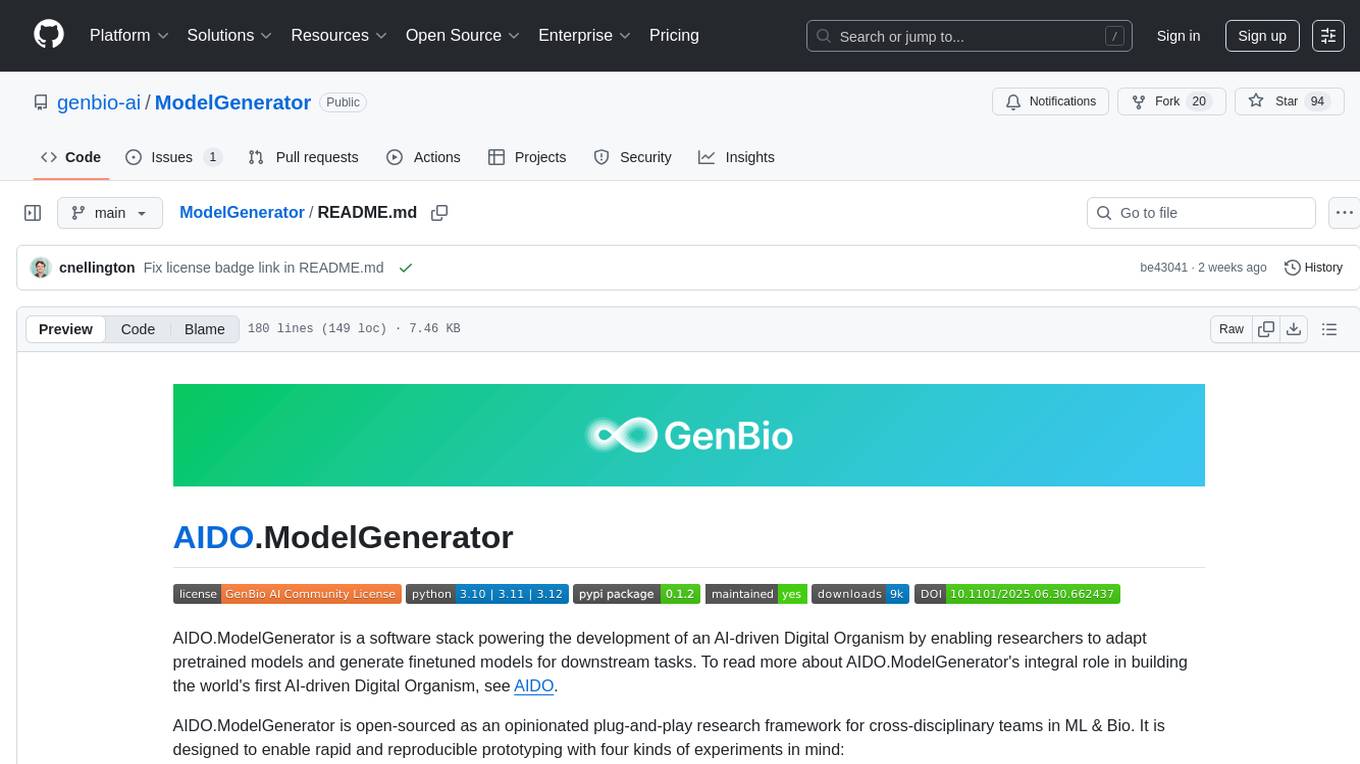
ModelGenerator
AIDO.ModelGenerator is a software stack designed for developing AI-driven Digital Organisms. It enables researchers to adapt pretrained models and generate finetuned models for various tasks. The framework supports rapid prototyping with experiments like applying pre-trained models to new data, developing finetuning tasks, benchmarking models, and testing new architectures. Built on PyTorch, HuggingFace, and Lightning, it facilitates seamless integration with these ecosystems. The tool caters to cross-disciplinary teams in ML & Bio, offering installation, usage, tutorials, and API reference in its documentation.
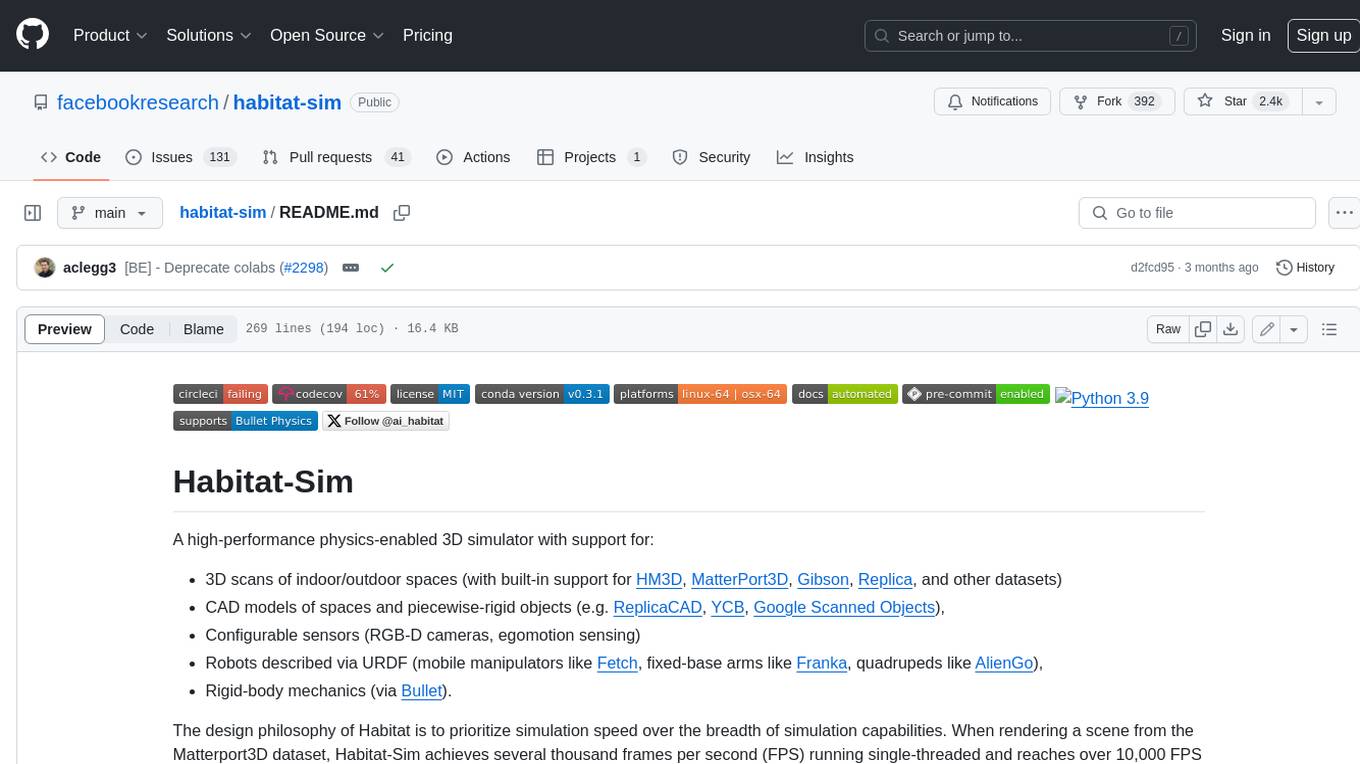
habitat-sim
Habitat-Sim is a high-performance physics-enabled 3D simulator with support for 3D scans of indoor/outdoor spaces, CAD models of spaces and piecewise-rigid objects, configurable sensors, robots described via URDF, and rigid-body mechanics. It prioritizes simulation speed over the breadth of simulation capabilities, achieving several thousand frames per second (FPS) running single-threaded and over 10,000 FPS multi-process on a single GPU when rendering a scene from the Matterport3D dataset. Habitat-Sim simulates a Fetch robot interacting in ReplicaCAD scenes at over 8,000 steps per second (SPS), where each ‘step’ involves rendering 1 RGBD observation (128×128 pixels) and rigid-body dynamics for 1/30sec.

raglite
RAGLite is a Python toolkit for Retrieval-Augmented Generation (RAG) with PostgreSQL or SQLite. It offers configurable options for choosing LLM providers, database types, and rerankers. The toolkit is fast and permissive, utilizing lightweight dependencies and hardware acceleration. RAGLite provides features like PDF to Markdown conversion, multi-vector chunk embedding, optimal semantic chunking, hybrid search capabilities, adaptive retrieval, and improved output quality. It is extensible with a built-in Model Context Protocol server, customizable ChatGPT-like frontend, document conversion to Markdown, and evaluation tools. Users can configure RAGLite for various tasks like configuring, inserting documents, running RAG pipelines, computing query adapters, evaluating performance, running MCP servers, and serving frontends.
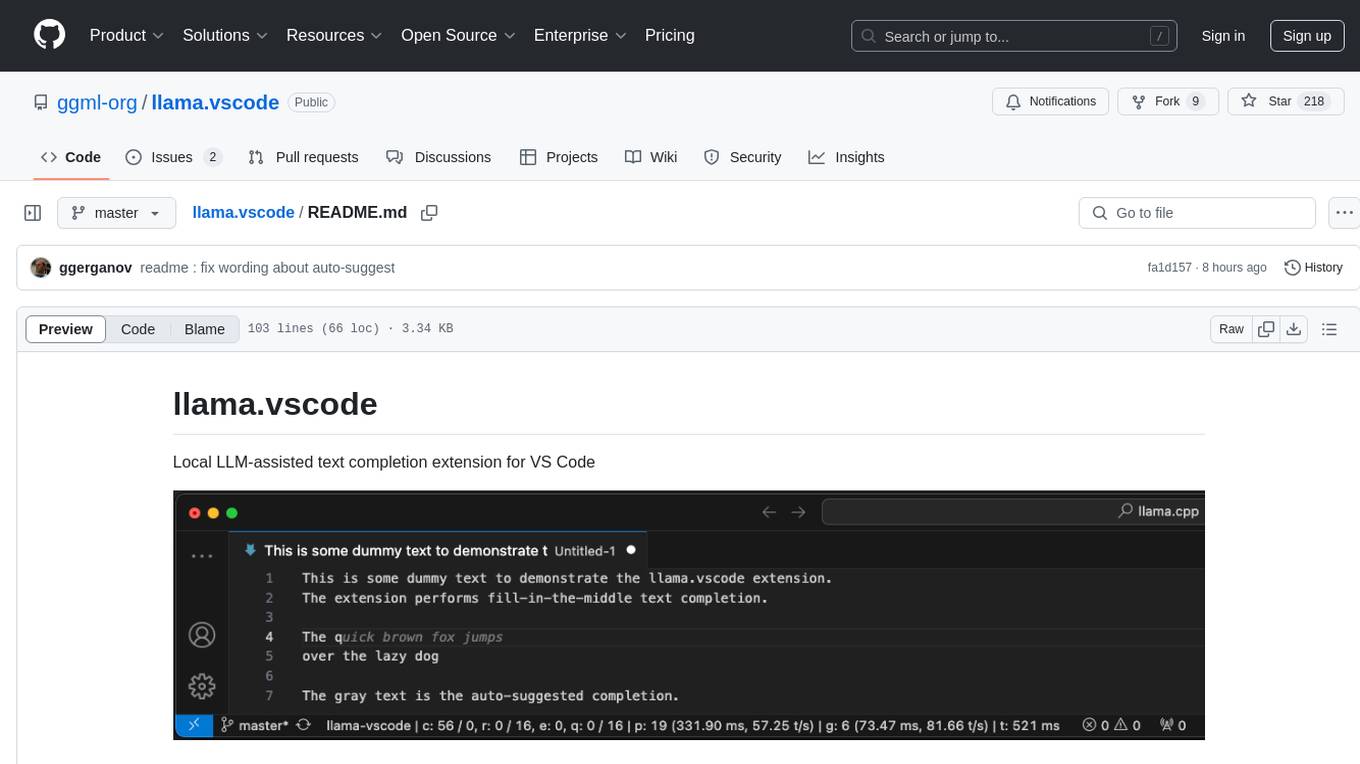
llama.vscode
llama.vscode is a local LLM-assisted text completion extension for Visual Studio Code. It provides auto-suggestions on input, allows accepting suggestions with shortcuts, and offers various features to enhance text completion. The extension is designed to be lightweight and efficient, enabling high-quality completions even on low-end hardware. Users can configure the scope of context around the cursor and control text generation time. It supports very large contexts and displays performance statistics for better user experience.
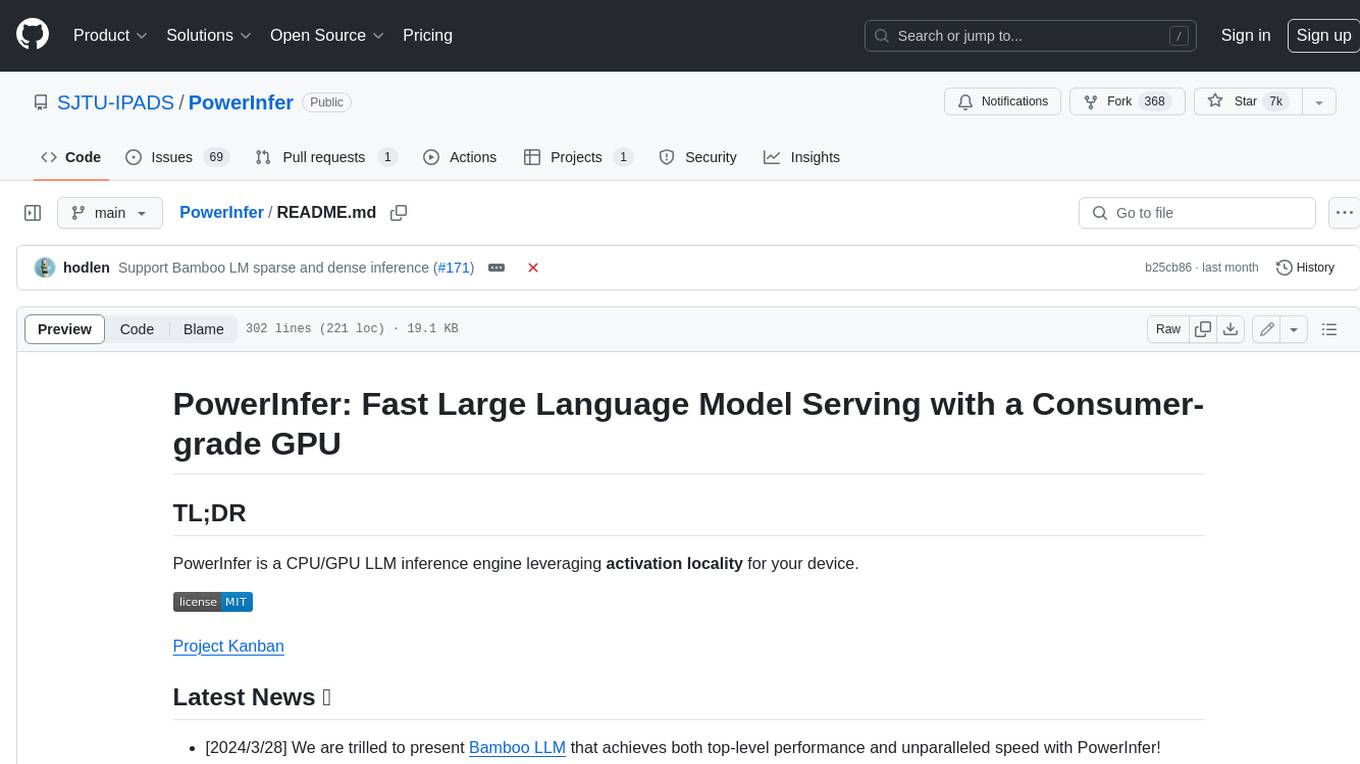
PowerInfer
PowerInfer is a high-speed Large Language Model (LLM) inference engine designed for local deployment on consumer-grade hardware, leveraging activation locality to optimize efficiency. It features a locality-centric design, hybrid CPU/GPU utilization, easy integration with popular ReLU-sparse models, and support for various platforms. PowerInfer achieves high speed with lower resource demands and is flexible for easy deployment and compatibility with existing models like Falcon-40B, Llama2 family, ProSparse Llama2 family, and Bamboo-7B.
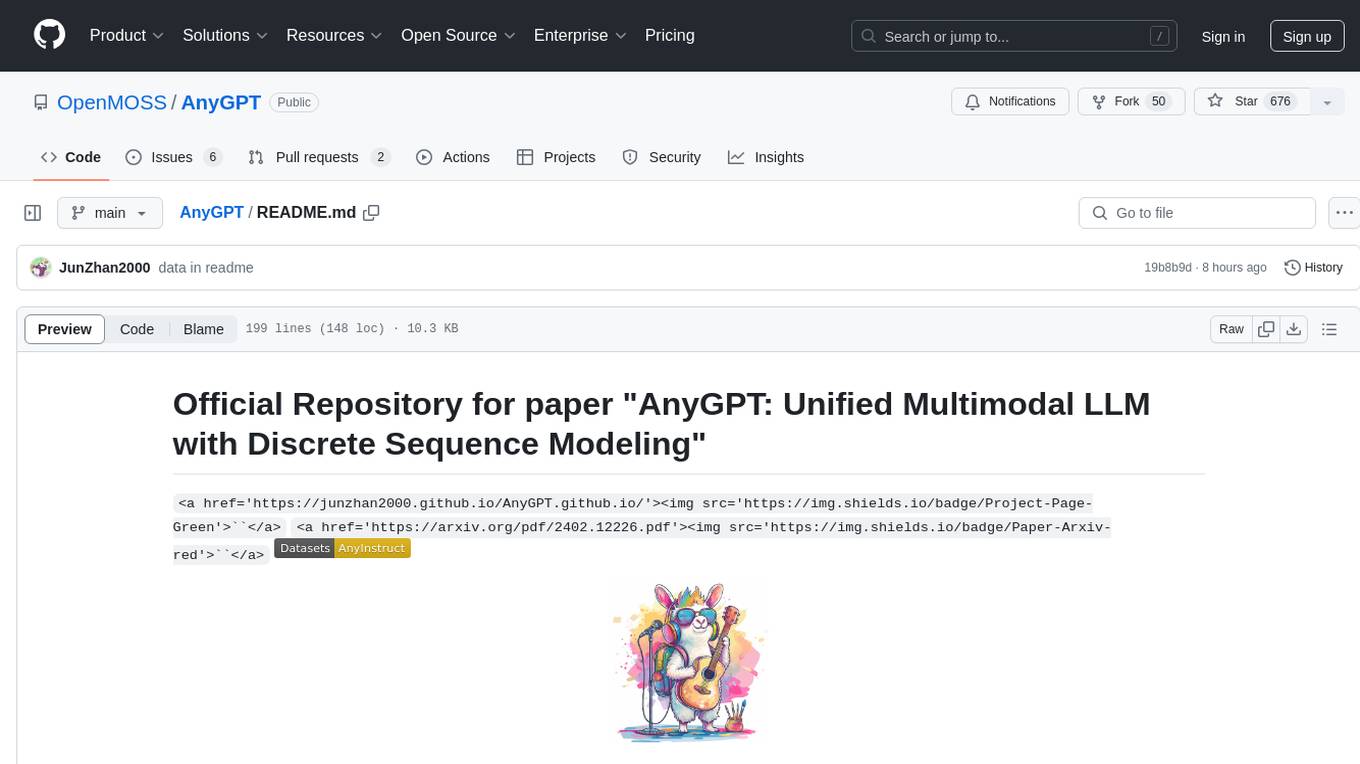
AnyGPT
AnyGPT is a unified multimodal language model that utilizes discrete representations for processing various modalities like speech, text, images, and music. It aligns the modalities for intermodal conversions and text processing. AnyInstruct dataset is constructed for generative models. The model proposes a generative training scheme using Next Token Prediction task for training on a Large Language Model (LLM). It aims to compress vast multimodal data on the internet into a single model for emerging capabilities. The tool supports tasks like text-to-image, image captioning, ASR, TTS, text-to-music, and music captioning.
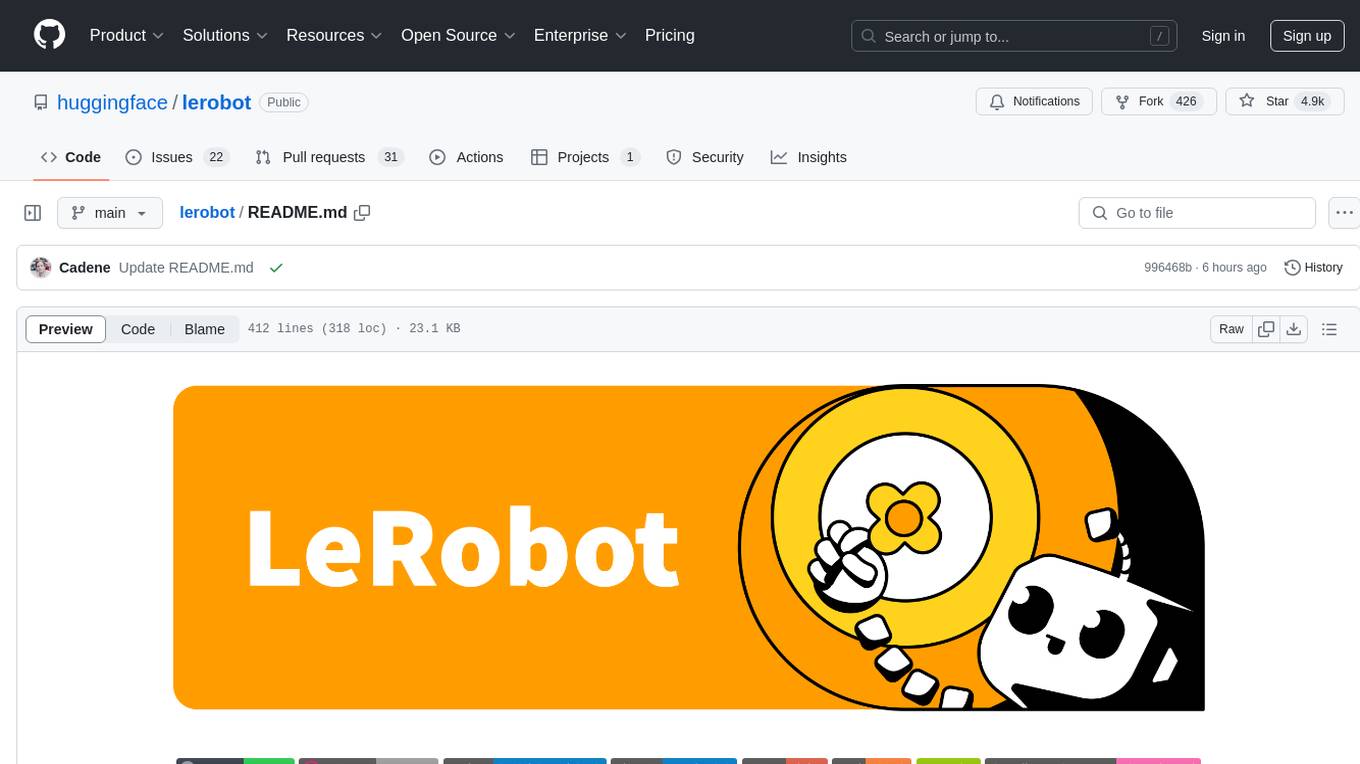
lerobot
LeRobot is a state-of-the-art AI library for real-world robotics in PyTorch. It aims to provide models, datasets, and tools to lower the barrier to entry to robotics, focusing on imitation learning and reinforcement learning. LeRobot offers pretrained models, datasets with human-collected demonstrations, and simulation environments. It plans to support real-world robotics on affordable and capable robots. The library hosts pretrained models and datasets on the Hugging Face community page.
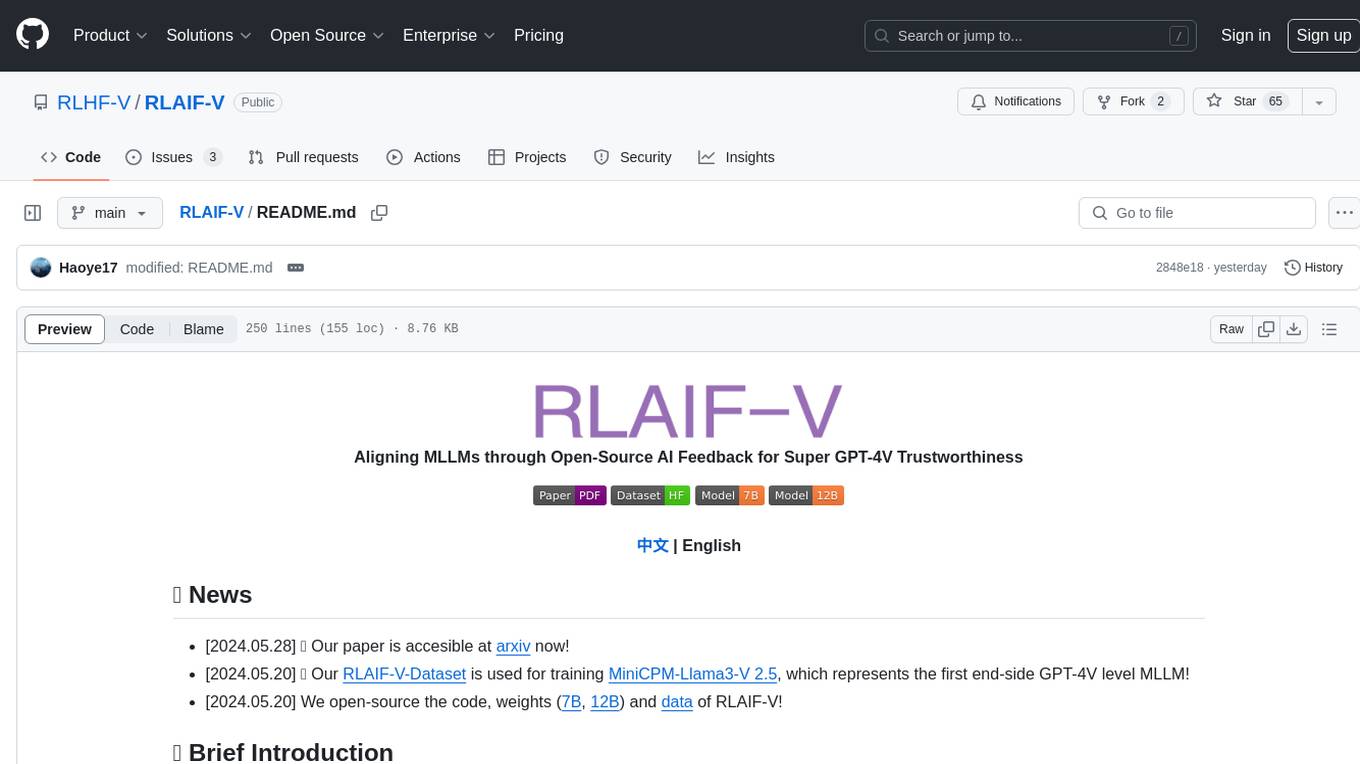
RLAIF-V
RLAIF-V is a novel framework that aligns MLLMs in a fully open-source paradigm for super GPT-4V trustworthiness. It maximally exploits open-source feedback from high-quality feedback data and online feedback learning algorithm. Notable features include achieving super GPT-4V trustworthiness in both generative and discriminative tasks, using high-quality generalizable feedback data to reduce hallucination of different MLLMs, and exhibiting better learning efficiency and higher performance through iterative alignment.
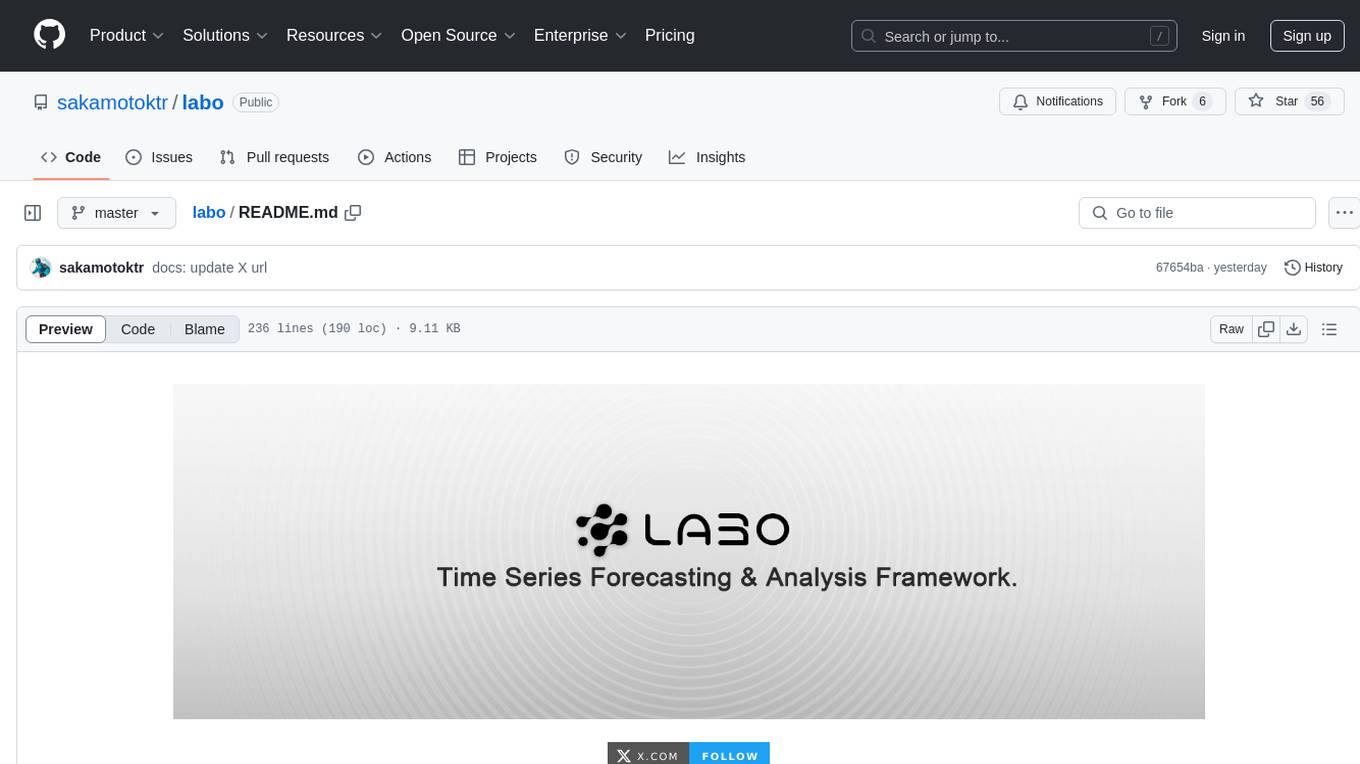
labo
LABO is a time series forecasting and analysis framework that integrates pre-trained and fine-tuned LLMs with multi-domain agent-based systems. It allows users to create and tune agents easily for various scenarios, such as stock market trend prediction and web public opinion analysis. LABO requires a specific runtime environment setup, including system requirements, Python environment, dependency installations, and configurations. Users can fine-tune their own models using LABO's Low-Rank Adaptation (LoRA) for computational efficiency and continuous model updates. Additionally, LABO provides a Python library for building model training pipelines and customizing agents for specific tasks.
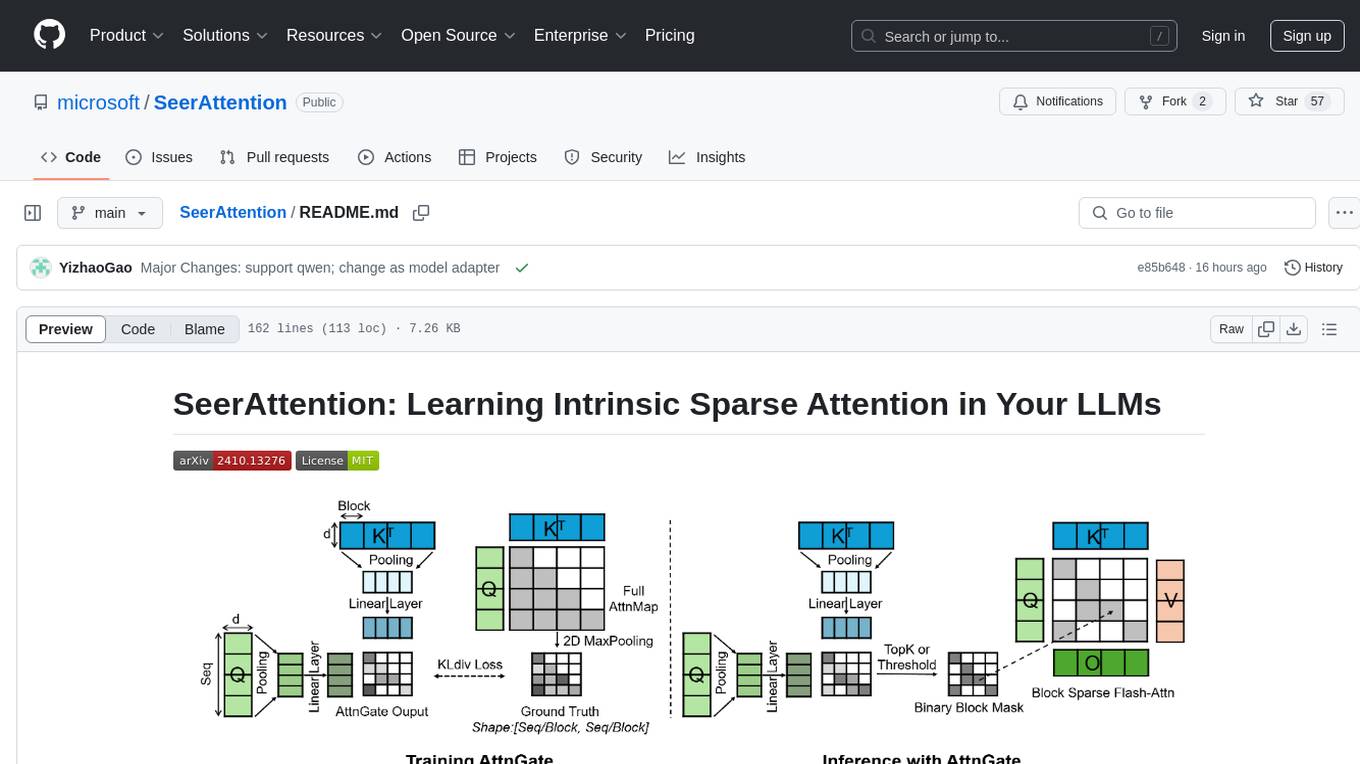
SeerAttention
SeerAttention is a novel trainable sparse attention mechanism that learns intrinsic sparsity patterns directly from LLMs through self-distillation at post-training time. It achieves faster inference while maintaining accuracy for long-context prefilling. The tool offers features such as trainable sparse attention, block-level sparsity, self-distillation, efficient kernel, and easy integration with existing transformer architectures. Users can quickly start using SeerAttention for inference with AttnGate Adapter and training attention gates with self-distillation. The tool provides efficient evaluation methods and encourages contributions from the community.
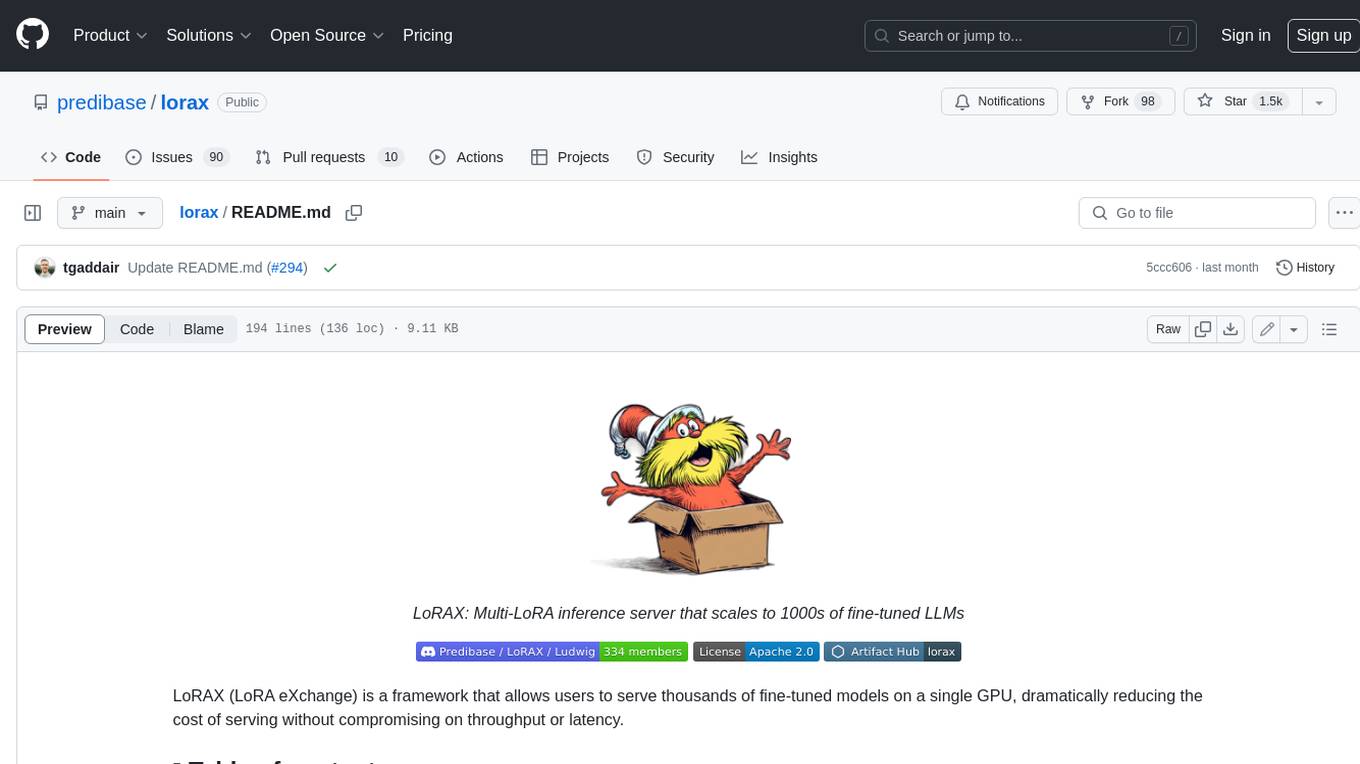
lorax
LoRAX is a framework that allows users to serve thousands of fine-tuned models on a single GPU, dramatically reducing the cost of serving without compromising on throughput or latency. It features dynamic adapter loading, heterogeneous continuous batching, adapter exchange scheduling, optimized inference, and is ready for production with prebuilt Docker images, Helm charts for Kubernetes, Prometheus metrics, and distributed tracing with Open Telemetry. LoRAX supports a number of Large Language Models as the base model including Llama, Mistral, and Qwen, and any of the linear layers in the model can be adapted via LoRA and loaded in LoRAX.
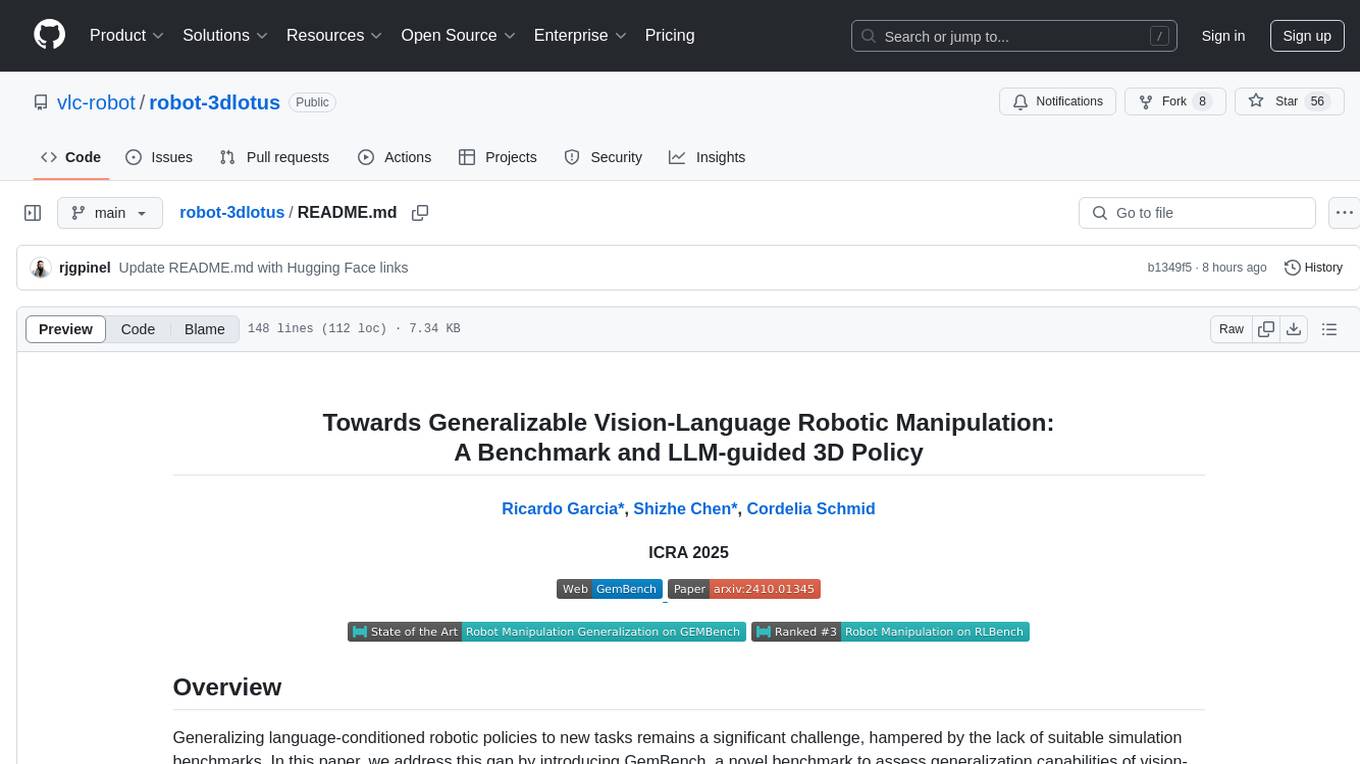
robot-3dlotus
Towards Generalizable Vision-Language Robotic Manipulation: A Benchmark and LLM-guided 3D Policy is a research project focusing on addressing the challenge of generalizing language-conditioned robotic policies to new tasks. The project introduces GemBench, a benchmark to evaluate the generalization capabilities of vision-language robotic manipulation policies. It also presents the 3D-LOTUS approach, which leverages rich 3D information for action prediction conditioned on language. Additionally, the project introduces 3D-LOTUS++, a framework that integrates 3D-LOTUS's motion planning capabilities with the task planning capabilities of LLMs and the object grounding accuracy of VLMs to achieve state-of-the-art performance on novel tasks in robotic manipulation.
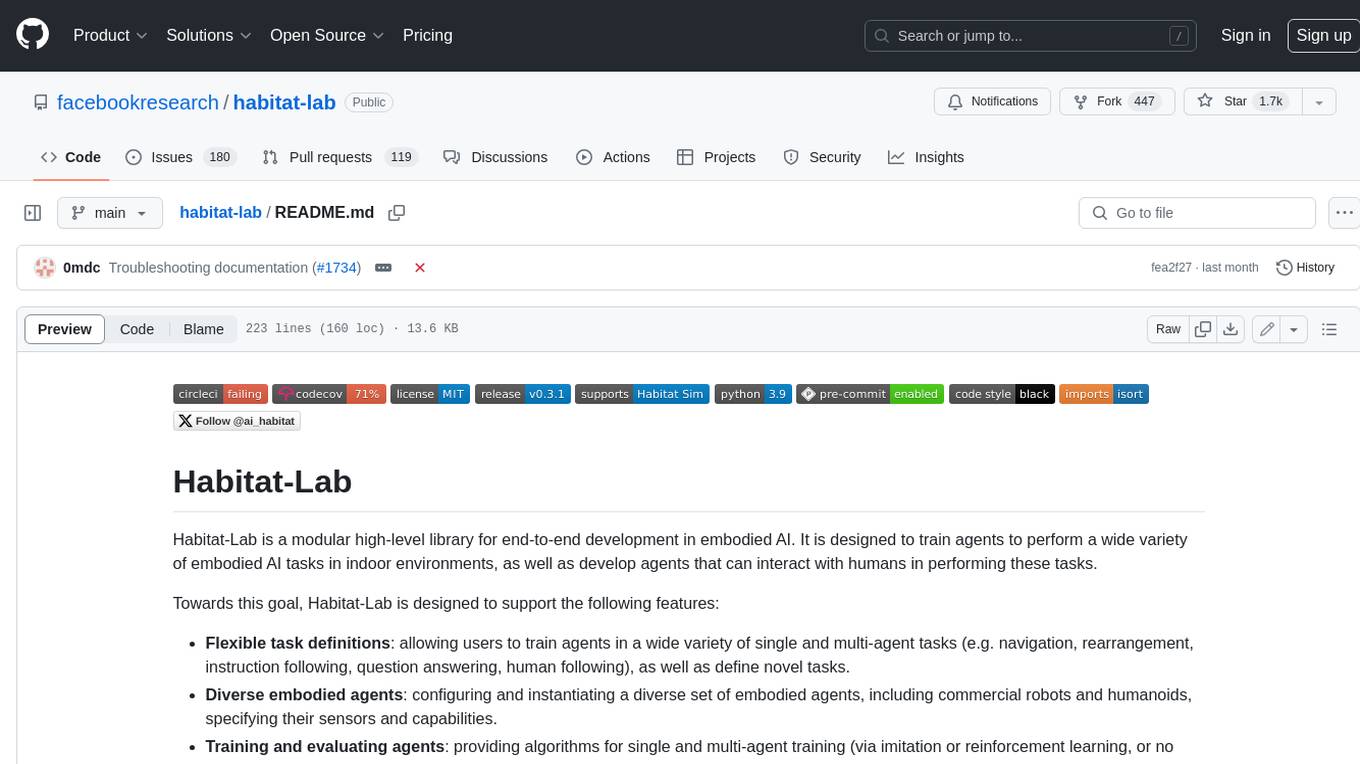
habitat-lab
Habitat-Lab is a modular high-level library for end-to-end development in embodied AI. It is designed to train agents to perform a wide variety of embodied AI tasks in indoor environments, as well as develop agents that can interact with humans in performing these tasks.
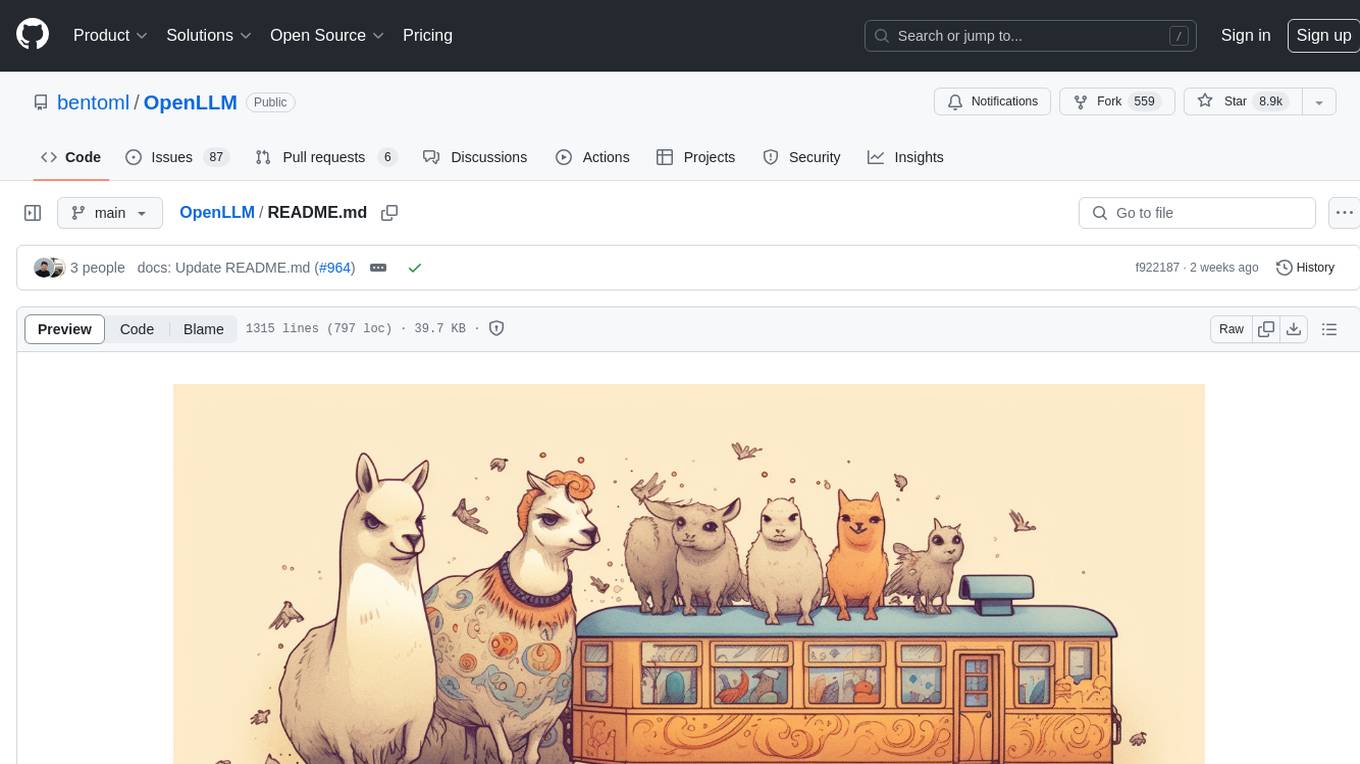
OpenLLM
OpenLLM is a platform that helps developers run any open-source Large Language Models (LLMs) as OpenAI-compatible API endpoints, locally and in the cloud. It supports a wide range of LLMs, provides state-of-the-art serving and inference performance, and simplifies cloud deployment via BentoML. Users can fine-tune, serve, deploy, and monitor any LLMs with ease using OpenLLM. The platform also supports various quantization techniques, serving fine-tuning layers, and multiple runtime implementations. OpenLLM seamlessly integrates with other tools like OpenAI Compatible Endpoints, LlamaIndex, LangChain, and Transformers Agents. It offers deployment options through Docker containers, BentoCloud, and provides a community for collaboration and contributions.
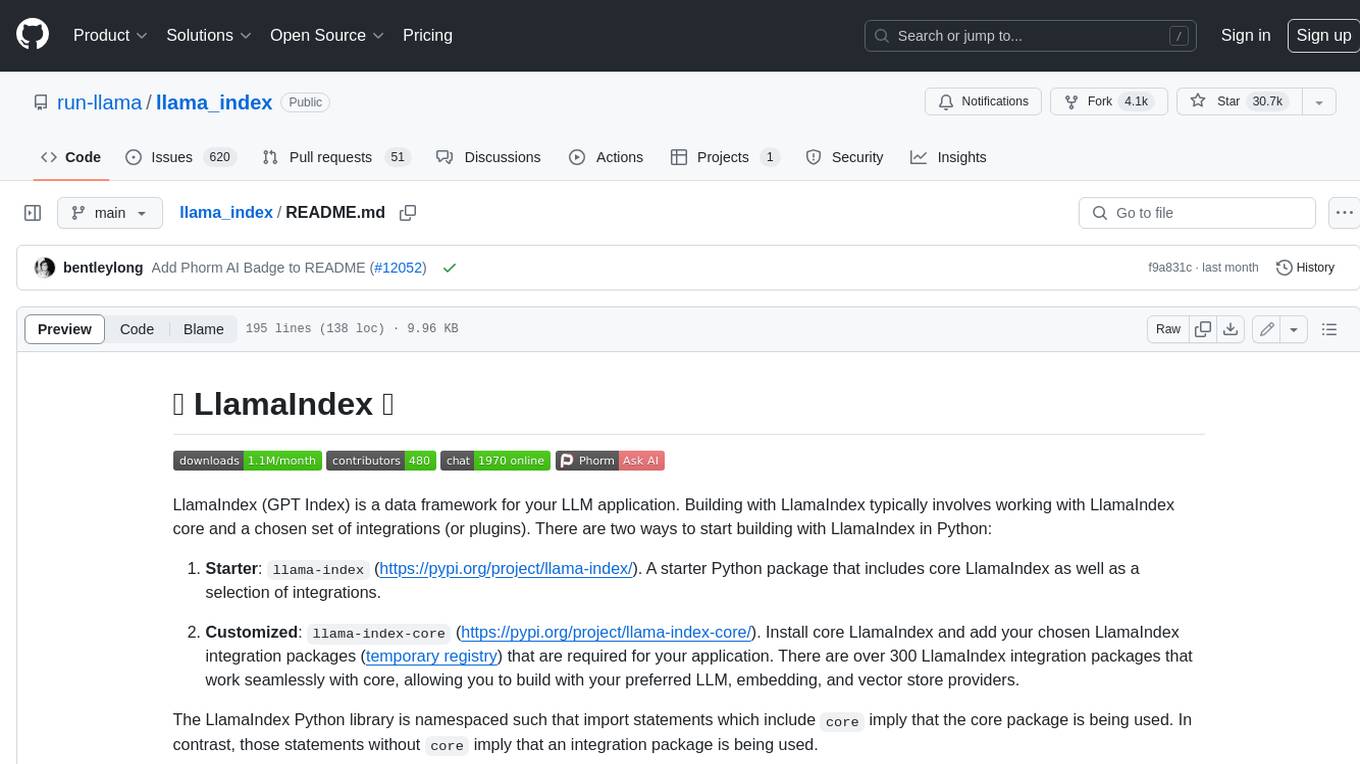
llama_index
LlamaIndex is a data framework for building LLM applications. It provides tools for ingesting, structuring, and querying data, as well as integrating with LLMs and other tools. LlamaIndex is designed to be easy to use for both beginner and advanced users, and it provides a comprehensive set of features for building LLM applications.
For similar tasks

DALM
The DALM (Domain Adapted Language Modeling) toolkit is designed to unify general LLMs with vector stores to ground AI systems in efficient, factual domains. It provides developers with tools to build on top of Arcee's open source Domain Pretrained LLMs, enabling organizations to deeply tailor AI according to their unique intellectual property and worldview. The toolkit contains code for fine-tuning a fully differential Retrieval Augmented Generation (RAG-end2end) architecture, incorporating in-batch negative concept alongside RAG's marginalization for efficiency. It includes training scripts for both retriever and generator models, evaluation scripts, data processing codes, and synthetic data generation code.
For similar jobs

weave
Weave is a toolkit for developing Generative AI applications, built by Weights & Biases. With Weave, you can log and debug language model inputs, outputs, and traces; build rigorous, apples-to-apples evaluations for language model use cases; and organize all the information generated across the LLM workflow, from experimentation to evaluations to production. Weave aims to bring rigor, best-practices, and composability to the inherently experimental process of developing Generative AI software, without introducing cognitive overhead.

LLMStack
LLMStack is a no-code platform for building generative AI agents, workflows, and chatbots. It allows users to connect their own data, internal tools, and GPT-powered models without any coding experience. LLMStack can be deployed to the cloud or on-premise and can be accessed via HTTP API or triggered from Slack or Discord.

VisionCraft
The VisionCraft API is a free API for using over 100 different AI models. From images to sound.

kaito
Kaito is an operator that automates the AI/ML inference model deployment in a Kubernetes cluster. It manages large model files using container images, avoids tuning deployment parameters to fit GPU hardware by providing preset configurations, auto-provisions GPU nodes based on model requirements, and hosts large model images in the public Microsoft Container Registry (MCR) if the license allows. Using Kaito, the workflow of onboarding large AI inference models in Kubernetes is largely simplified.

PyRIT
PyRIT is an open access automation framework designed to empower security professionals and ML engineers to red team foundation models and their applications. It automates AI Red Teaming tasks to allow operators to focus on more complicated and time-consuming tasks and can also identify security harms such as misuse (e.g., malware generation, jailbreaking), and privacy harms (e.g., identity theft). The goal is to allow researchers to have a baseline of how well their model and entire inference pipeline is doing against different harm categories and to be able to compare that baseline to future iterations of their model. This allows them to have empirical data on how well their model is doing today, and detect any degradation of performance based on future improvements.

tabby
Tabby is a self-hosted AI coding assistant, offering an open-source and on-premises alternative to GitHub Copilot. It boasts several key features: * Self-contained, with no need for a DBMS or cloud service. * OpenAPI interface, easy to integrate with existing infrastructure (e.g Cloud IDE). * Supports consumer-grade GPUs.

spear
SPEAR (Simulator for Photorealistic Embodied AI Research) is a powerful tool for training embodied agents. It features 300 unique virtual indoor environments with 2,566 unique rooms and 17,234 unique objects that can be manipulated individually. Each environment is designed by a professional artist and features detailed geometry, photorealistic materials, and a unique floor plan and object layout. SPEAR is implemented as Unreal Engine assets and provides an OpenAI Gym interface for interacting with the environments via Python.

Magick
Magick is a groundbreaking visual AIDE (Artificial Intelligence Development Environment) for no-code data pipelines and multimodal agents. Magick can connect to other services and comes with nodes and templates well-suited for intelligent agents, chatbots, complex reasoning systems and realistic characters.
